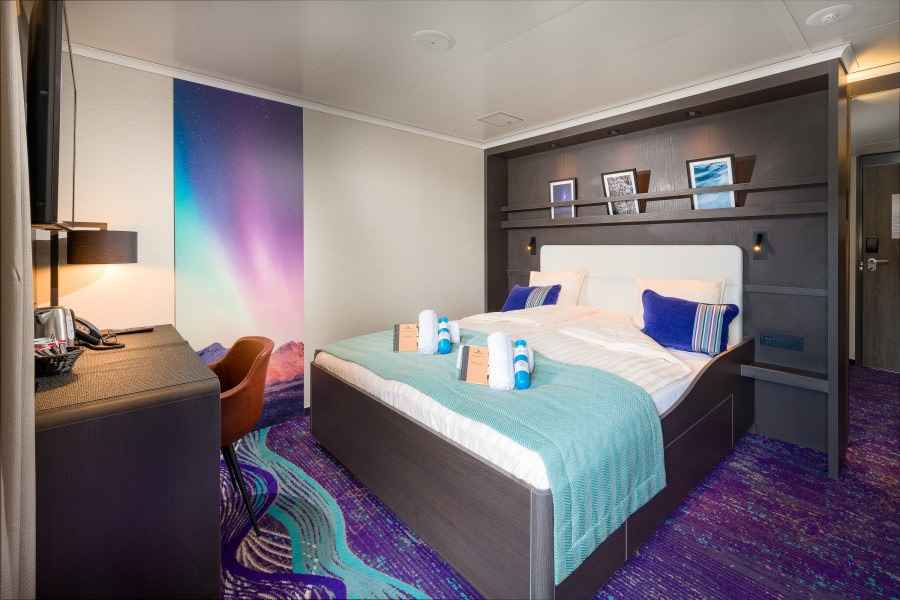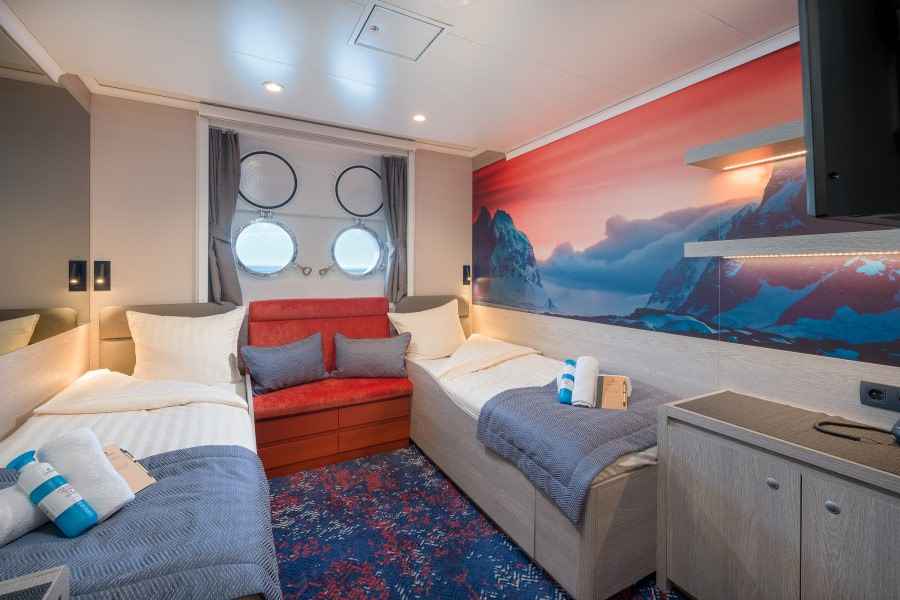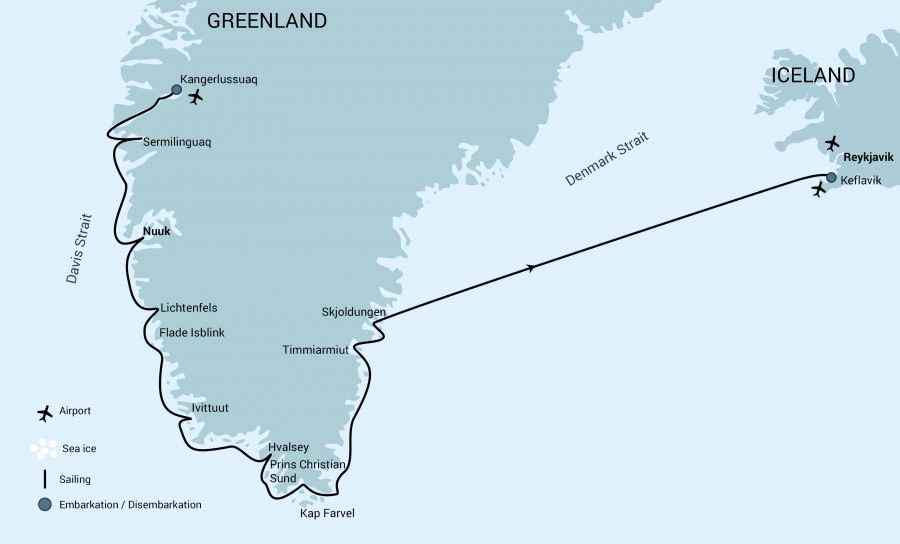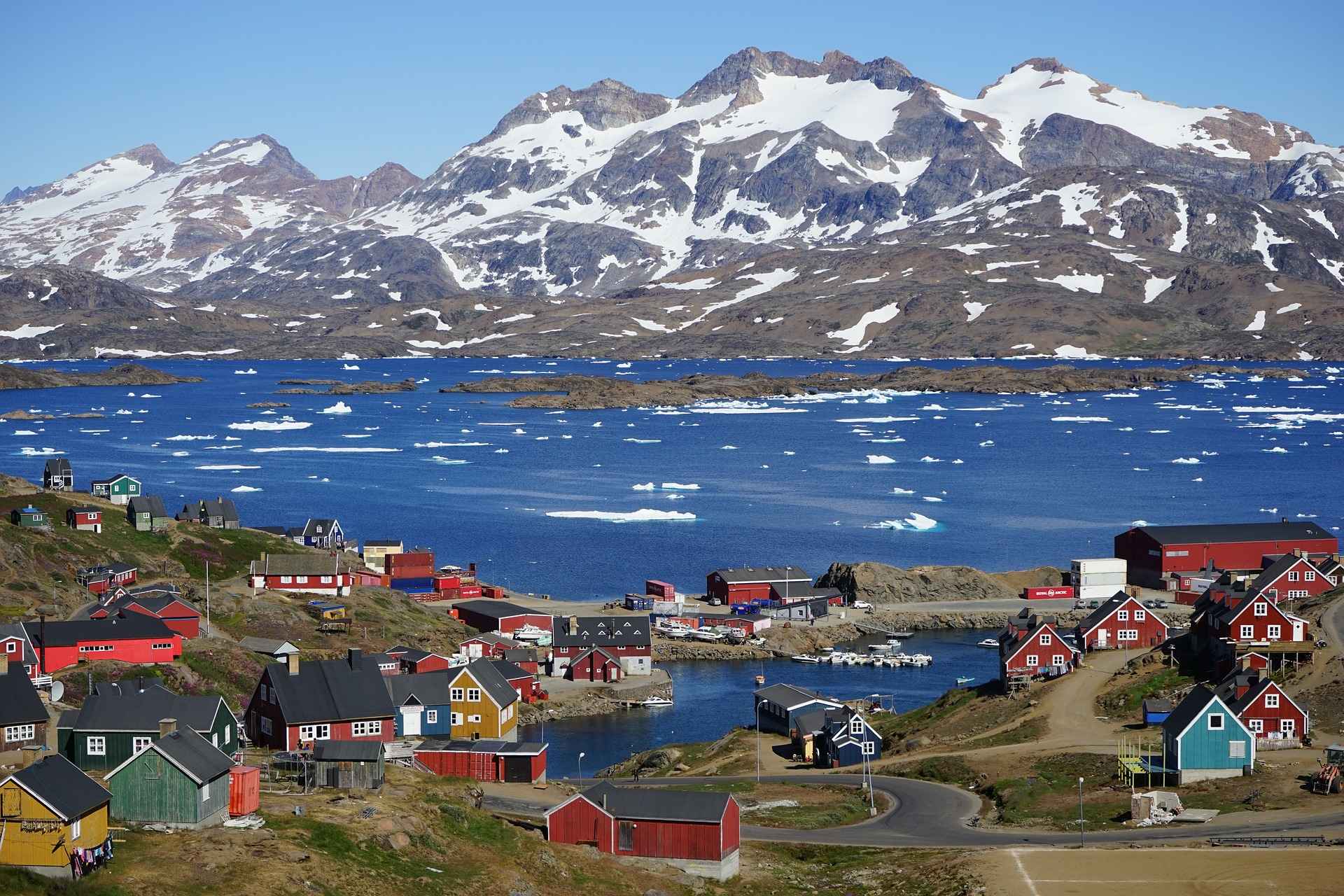Janssonius
- Description
- Accommodation
- Specifications
- New! Science Base Camp Trips - Arctic & Antarctica
- South & East Greenland Cruise
The newest polar vessel is the M/V Janssonius which meets the latest and highest Lloyd’s Register standards for ice-strengthened cruise ships. Surpassing the requirements of the Polar Code adopted by the International Maritime Organization (IMO), Janssonius represents the most flexible, advanced, innovative touring vessel in the polar regions, thoroughly optimized for exploratory voyages that provide you the utmost first-hand contact with the Arctic and Antarctica.
Not only will the numerous amenities and on-board entertainments help make your Janssonius voyage truly memorable, this ship also gives you the peace of mind that comes with choosing one of the most environmentally friendly vessel on the polar seas. Janssonius uses LED lighting, steam heating, bio-degradable paints and lubricants, and state-of-the-art power management systems that keep fuel consumption and CO2 levels minimal. This means that when you sail aboard Janssonius, you get to enjoy the exotic landscapes and wildlife as much as possible while impacting them as little as possible. More info and photos coming soon!
Janssonius offers high-quality accommodation for 170 passengers in six grand suites with balconies (22 square meters, 236 square feet), eight junior suites (20 square meters, 215 square feet), eight superior cabins (20 to 21 square meters, 215 to 226 square feet), 11 twin deluxe cabins, (19 to 22 square meters, 161 to 236 square feet), 14 twin window cabins as well as 27 twin porthole cabins, two triple porthole cabins (12 to 14 square meters, 129 to 151 square feet), and four quadruple porthole cabins that vary in size from 15 to 16 square meters, or 129 to 172 square feet. One deck consists of a large observation lounge and separate lecture room, which are reserved for a wide variety of interactive workshops, exhibitions, and performances particular to Janssonius. Though elegantly designed in stylish mid-century modern décor, this vessel holds true to Oceanwide’s distinctive cozy and informal atmosphere.
Deluxe Double Cabin:
Quad Cabin:
Specifications
Passengers: 170 in 80 cabins
Staff & crew: 72
Length: 108.6 meters
Breadth: 17.6 meters
Draft: 5.30 meters
Ice class: Polar Class 6 (equivalent 1A-Super)
Displacement: 5,537 tonnes
Propulsion: 2 x ABC main engines; total 4,200 kW
Speed: 15 knots
Science Base Camp Cruises
Regions: Antarctica, Arctic
Highlights: Science Basecamp
For polar travelers with a particular bent for science, we have designed an all-new Science Basecamp program that explores such fascinating topics as geology, marine biology, glaciology, and macro-photography.
This family-oriented program is led by expert scientist-guides who will conduct activities both on and off the ship, leading passengers in well-structured and highly engaging sessions in which everyone can participate regardless of experience and at no additional cost beyond the price of booking.
The new Science Basecamp concept is similar to our popular multi-activity Basecamp voyages, the distinction being that all activities are centered on exploring polar science.
Participants will divide into groups and take part in multiple research outings: One group might be collecting renewable samples from nature, another might be making observations about nearby glaciers, and yet another could be busy studying local rock formations. Guests who complete the Science Basecamp sessions will receive a keepsake certificate to help remember their exploratory adventure. The possibilities are as diverse as the polar regions themselves.
For 2022 - there are 2 Spitsbergen Arctic trips (Jun / Jul) and South Georgia trip (Oct)
Join us on an adventurous Arctic voyage throughout remote southeast Greenland, enjoying the grandeur of colossal glaciers, old Norse history, and seldom-seen species under the magical northern lights.
Date: Sep 3-13, 2022
Prices: $4500 quad share / $5600 triple porthole / $6300 twin porthole
The Trip:
Day 1: Westward through the fjord
Our voyage begins in the small town of Kangerlussuaq (Søndre Strømfjord), where we board the ship and spend the night sailing westward through the area’s long fjord (250 km, 155 miles). The currents here are strong and may work against us or with us.
Day 2: Sermilinguaq Fjord and seabird cliffs
Today we head east of Hamborgerland to reach the fantastic landscapes of the Sermilinguaq Fjord. Our Zodiac excursions in this area, which will take place near a glacier front, also include some landings near seabird colonies where some winged residents still keep to the cliffs.
Day 3: Exploring Greenland's captivating capital
We next land at Nuuk (once called Godthåb), the capital of Greenland, with a population of about 18,000. The trip to shore should include a visit to the museum, which has a remarkable collection of Inuit mummies dating from the 15th century. These were found near Uummannaq, farther to the north. The Cultural Centre of Nuuk, which each year has an exhibition of the work from a Greenlandic artist, is also well worth visiting.
The area around Nuuk offers many attractions: Among the oldest exposed rocks on Earth are found here, and the waters to the west of town are a good place to look for humpbacks and blue whales. We’re now getting into the zone where the darkness at night lets us admire the aurora borealis, or northern lights.
Day 4: Whales, seabirds, and the Greenland ice sheet
We aim to land at Lichtenfels, an abandoned Herrnhuters (Moravian Brethren) mission post, with a large cemetery from the 18th century.
We may also sail to the small Greenlandic fishing village of Fiskenaes (formerly Brielse Haven). Later in the evening, we sail past Flade Isblink, where the Greenland ice sheet nearly comes to the coast. Keep a lookout for humpbacks and minke whales. If we’re lucky, we might see migratory birds from the Southern Hemisphere, such as great shearwaters from Tristan da Cunha and Antarctic skuas from Antarctica.
Day 5: Admiring the Arsuk Glacier
Our first landing of the day is Ivittuut, a deserted settlement where we can see the remains of an old cryolite mine from the 19th century, along with many tokens of how people lived here a century ago. We often also see musk oxen that have been introduced into this area. In the Arsuk Fjord, we may visit the impressive waterfall of Fox Fald and see the deep blue front of the Arsuk Glacier.
Day 6: Greenland’s ancient Norse remains
Today we continue to Hvalsey (Whale Island), visiting the best-preserved Viking church in Greenland. We then plan to sail to the ruins of Gardar, an historic episcopal residence now located in the settlement of Igaliku. Here we see more ancient Norse buildings where the local people keep sheep and grow potatoes, often against a background of dazzling icebergs. When and why the Norse disappeared from Greenland is not known, but records show there were settlers living here for about 500 years.
The remains of their dwellings are scattered all over the area, but one of the longest-lived settlements was at Hvalsey.
Day 7: Stunning views and Viking artifacts
Sailing Prins Christian Sund, we cut through the southern tip of Greenland. This strait is renowned for its magnificent views on both sides.
At the entrance to the strait, opposite the settlement of Narsarmijit (once Frederiksdal), we hope to land at Herjolfsnes and enjoy the extensive artifacts of Greenland’s Viking settlers. We then continue past Aappilattoq (formerly Augpilagtoq), a village characterized by a towering mountain, and plan to make a shore excursion at either Igdlorssuit Havn or Svaerdfisken Havn.
Day 8: Timmiarmiut Fjord ice formations
We venture on to the remote eastern coast of Greenland. At the mouth of Timmiarmiut Fjord (one of the few fjords on the east coast that has recorded depth soundings), we land on Timmiarmiut Island in a safe bay that ships have used for centuries.
The remains of Thule culture dwellings can still be seen here, and deeper in the fjord is a great area for Zodiac cruises among icebergs that have calved from glaciers flowing down from the inland ice.
Day 9: The incredible scenes of Skjoldungen Island
Today just might offer us the high point of the whole voyage. As we circumnavigate Skjoldungen Island, we’ll experience some of the most breathtaking landscapes in all of Greenland.
We aim to sail by a deserted settlement, then more inland near the settlement of Qornoq. Here we can see the remains of a Thule settlement and maybe even ringed seals. At the head of the fjord, we’ve planned a walk to Dronning Marie Dal amid a landscape of colorful autumn flora.
Day 10: Denmark Strait’s wildlife and auroras
As we sail Denmark Strait on our way to Iceland, the going can be rough, but be sure to spend some time on deck looking for whales, migrating seabirds, and of course, the aurora borealis.
Day 11: Farewell Greenland, hello Iceland
Though even the greatest adventures eventually must end, you will return home with countless memories (and memorable photos) to enjoy for years to come.
Depending on the weather, we should arrive at the delightful Icelandic port town of Keflavik around midday.
Since the weather in Denmark Strait might delay us, we suggest planning your return flight for after day 11.

